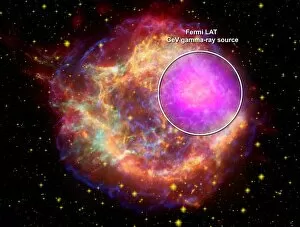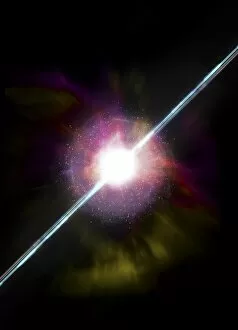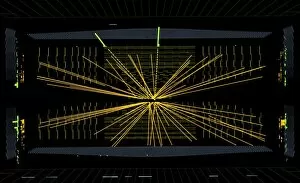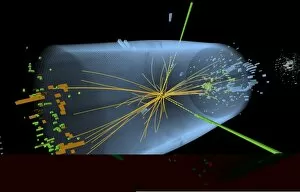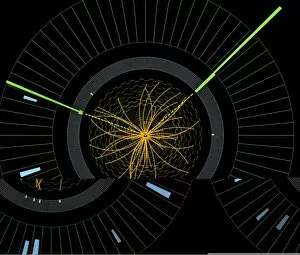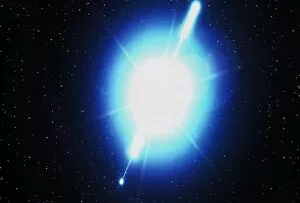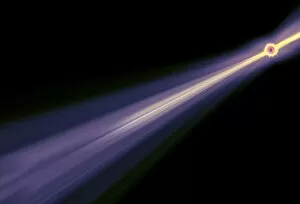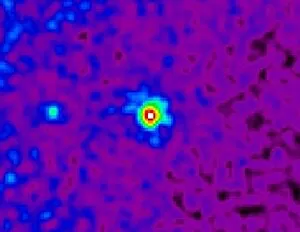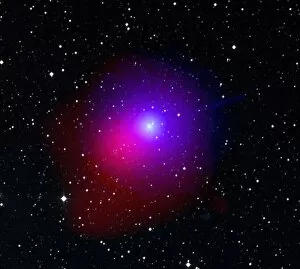Gamma Ray Collection
"Captivating Gamma Ray Artwork: Pulsar Unveils Stunning NASA Images" In a mesmerizing display of cosmic beauty, NASA released captivating images on November 9, 2010
All Professionally Made to Order for Quick Shipping
"Captivating Gamma Ray Artwork: Pulsar Unveils Stunning NASA Images" In a mesmerizing display of cosmic beauty, NASA released captivating images on November 9, 2010, showcasing the awe-inspiring gamma-ray bubbles that extend an astonishing 50, 000 light-years from end to end. These celestial wonders were captured by NASA's Swift spacecraft and its Ultraviolet/Optical instrument. The journey into space begins at Cape Canaveral Air Force Station in Florida, where the first half of the payload fairing is carefully moved into place around NASA's groundbreaking mission. Inside the mobile service tower on Launch Pad 17-B, scientists and engineers work tirelessly to prepare for this monumental endeavor. At Kennedy Space Center's Hangar AE on Cape Canaveral Air Force Station (CCAFS), meticulous attention is given to every detail as one of the solar cells that will power this extraordinary spacecraft is closely examined. In this clean room environment, precision and perfection are paramount. As anticipation builds, the moment arrives when the Swift spacecraft emerges from its protective wrapping in Hangar AE. The unveiling marks another significant milestone in humanity's quest for knowledge about our vast universe. Inside the mobile service tower on Launch Pad 17-B at Cape Canaveral Air Force Station, final preparations take place with utmost care and dedication. Every intricate step brings us closer to unlocking secrets hidden within gamma rays – high-energy photons that hold remarkable insights into distant galaxies and cataclysmic events occurring across space-time. With each passing day leading up to launch day at Cape Canaveral Air Force Station, excitement fills the air as we eagerly await witnessing history unfold before our eyes. This ambitious mission promises not only breathtaking artwork but also invaluable scientific discoveries that will expand our understanding of the cosmos. So let us marvel at these stunning gamma-ray bubbles while we embark on a voyage through time and space – a testament to human ingenuity and our insatiable curiosity about the wonders that lie beyond.

